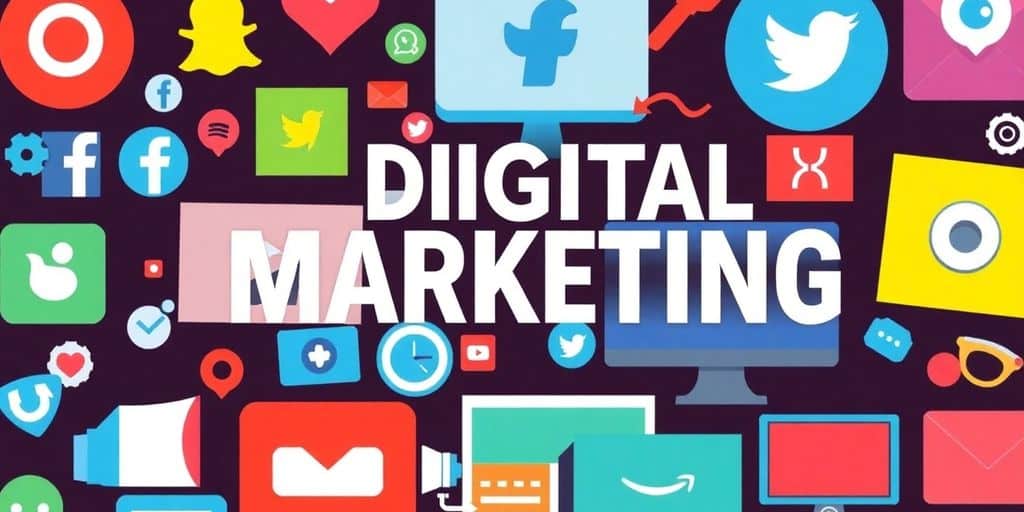Understanding Marketing Automation Tools for SMEs
What Are Marketing Automation Tools?
Marketing automation tools are software solutions designed to simplify and automate repetitive marketing tasks. These tools help businesses manage campaigns, track customer interactions, and analyse data to improve marketing effectiveness. For small businesses, they often include features like email marketing software, social media scheduling, and lead tracking. The goal is to save time and resources while driving better results.
Some common types of automated marketing platforms include:
- Email marketing tools for newsletters and drip campaigns.
- Customer Relationship Management (CRM) systems for tracking leads.
- Analytics platforms to measure campaign performance.
Key Benefits for Small and Medium Enterprises
For SMEs, marketing automation offers several advantages:
- Time Efficiency: Automating tasks like email follow-ups or social media posts frees up time for other priorities.
- Cost-Effectiveness: Many small business marketing solutions are affordable and deliver significant returns.
- Improved Customer Engagement: Tools can personalise messages based on customer behaviour.
- Better Data Insights: Digital marketing tools for SMEs provide analytics to help understand what works.
| Benefit | Example Tools |
|---|---|
| Time Efficiency | Email schedulers, social media planners |
| Improved Engagement | Personalised email campaigns |
| Cost-Effectiveness | Free or low-cost platforms |
| Data-Driven Decisions | Campaign analytics dashboards |
Common Misconceptions About Automation
Despite its benefits, marketing automation is often misunderstood. Here are some myths:
- "It’s only for large companies." In reality, there are tools specifically designed for SMEs.
- "Automation feels impersonal." With the right settings, it can actually make communication more personalised.
- "It’s too expensive." Many digital marketing tools for SMEs offer free trials or budget-friendly plans.
Marketing automation enables marketers to streamline time-consuming and repetitive tasks, allowing them to concentrate on more strategic and creative activities. Learn more.
Choosing the Right Marketing Automation Tool
Factors to Consider for SMEs
When selecting a marketing automation tool, small and medium enterprises (SMEs) should focus on tools that are both cost-effective and simple to use. Here are some key factors to keep in mind:
- Budget: Start by determining how much you can realistically spend. Many tools, like Brevo’s affordable all-in-one solution, offer budget-friendly options for SMEs.
- Ease of Use: Choose a platform that your team can quickly learn and use without extensive training.
- Scalability: Ensure the tool can grow with your business. You don’t want to outgrow your software in a year.
- Core Features: Identify the must-have features. For example, do you need email campaigns, customer segmentation, or CRM integration?
- Customer Support: Reliable support can save you time and headaches down the line.
Standalone Tools vs All-in-One Platforms
The choice between standalone tools and all-in-one platforms depends on your specific needs:
| Type of Tool | Features | Best For |
|---|---|---|
| Standalone Tools | Focused on a single function (e.g., email marketing) | Businesses with simpler needs |
| All-in-One Platforms | Combine multiple features like CRM, email, and analytics | Companies seeking long-term solutions |
Standalone tools, like basic email marketing software, are often cheaper and easier to implement. However, all-in-one platforms, such as HubSpot’s premium option, provide a more comprehensive solution for businesses looking to streamline multiple processes.
Evaluating Cost-Effectiveness
Before committing to a tool, evaluate its potential return on investment (ROI). Here’s how:
- Assess Long-Term Benefits: Consider how the tool will impact your customer retention, sales, or overall efficiency.
- Trial Runs: Take advantage of free trials to see if the platform meets your needs.
- Compare Costs: Don’t just look at the upfront price. Factor in training, support, and any add-ons.
The right tool isn’t always the cheapest—it’s the one that aligns with your goals and delivers measurable results.
Top Features to Look for in Marketing Automation Tools
Email Campaign Management
Email campaigns are the bread and butter of marketing automation. A good tool should simplify the process of creating, scheduling, and tracking email campaigns. Look for features like drag-and-drop email builders, pre-designed templates, and A/B testing capabilities. These ensure your emails not only look professional but also perform well. Many platforms also include analytics that show open rates, click-through rates, and other metrics, helping you fine-tune your strategy.
Customer Journey Mapping
Understanding your customer’s journey is key to delivering the right message at the right time. Marketing automation tools with journey mapping features let you visualise how customers interact with your brand. This might include tracking their actions on your website, email interactions, or social media activity. With this data, you can create workflows that guide customers from awareness to purchase. It’s like having a roadmap for turning visitors into loyal customers.
Integration with CRM Systems
For a truly unified approach, your marketing automation tool should integrate seamlessly with your CRM system. This allows for better data sharing between marketing and sales teams. For instance, when a lead interacts with your marketing materials, that information is automatically updated in the CRM. This ensures your sales team has all the context they need to close deals more effectively. Some tools even offer built-in CRM capabilities, reducing the need for additional software.
Choosing the right features depends on your business goals and the scale of your operations. Start with the essentials and expand as your needs grow.
Implementing Marketing Automation in Your Business
Setting Clear Marketing Goals
Before diving into automation, it’s important to identify what you want to achieve. Are you aiming to boost lead generation, improve customer retention, or streamline your campaigns? Define your objectives clearly, as they’ll shape the way you use your tools. Without clear goals, automation can feel like shooting in the dark.
Here’s how to get started:
- List your top three marketing priorities.
- Align these goals with measurable outcomes, like increased email open rates or reduced lead response times.
- Regularly review and adjust your goals as your business evolves.
Training Your Team for Success
Your team needs to understand how to use marketing automation tools effectively. Training isn’t just a one-off event; it’s an ongoing process. Focus on:
- Familiarising them with the tool’s core features, like CRM integration for marketing.
- Providing real-world scenarios to practise creating campaigns.
- Encouraging them to explore advanced features, such as automated workflows and analytics.
A well-trained team is the backbone of successful automation. When your staff knows what they’re doing, they’ll spend less time troubleshooting and more time driving results.
Measuring ROI and Adjusting Strategies
Automation isn’t a set-it-and-forget-it solution. You’ll need to measure its impact and tweak your approach. Start by tracking these key metrics:
| Metric | Why It Matters |
|---|---|
| Conversion Rates | Shows how effectively leads are turning into customers. |
| Email Open Rates | Indicates the success of your email campaigns. |
| Customer Retention | Evaluates the long-term value of your automation efforts. |
Once you’ve analysed the data, adjust your strategies. For instance, if your CRM integration for marketing isn’t delivering expected results, consider revisiting your workflows or customer segmentation.
By setting goals, training your team, and staying adaptable, you’ll maximise the value of marketing automation for your business. Moreover, regularly reviewing your progress will help identify areas for improvement and ensure that your strategies remain aligned with your business objectives. A comprehensive digital marketing services overview can provide insights into the latest trends and tools available, allowing you to refine your approach further. Emphasizing collaboration and communication within your team will also enhance the effectiveness of your marketing automation efforts.
Maximising the Benefits of Marketing Automation
Enhancing Customer Engagement
Marketing automation lets you interact with your audience in a way that feels personal and timely. By segmenting customers based on their behaviours or preferences, you can send targeted messages that actually resonate. Imagine sending a birthday discount to a loyal customer or recommending a product based on their browsing history. These small touches can build trust and loyalty over time. Integrating these personalized interactions with your social media marketing strategies can amplify their impact, reaching customers where they are most active. By combining automation with social insights, you can create campaigns that not only engage but also foster meaningful conversations. This holistic approach ensures that your audience feels valued, further enhancing their connection to your brand.
Pro Tip: Don’t just automate for the sake of it. Make sure your messages offer real value to your audience. It’s not about volume; it’s about relevance.
Streamlining Marketing Workflows
Let’s face it—manual tasks like scheduling posts or sending follow-up emails eat up valuable time. Automation tools can handle these repetitive jobs, freeing up your team to focus on strategy and creativity. For example:
- Automate your email campaigns to nurture leads without constant oversight.
- Use social media scheduling tools to maintain a consistent online presence.
- Set up automatic data collection to track campaign performance.
With these processes running on autopilot, you’ll have more space to think big and innovate.
Improving Lead Nurturing and Conversion
Lead nurturing is where automation truly shines. Instead of sending the same generic email to everyone, automation allows you to target potential customers with content tailored to their needs. This could mean sharing a guide about your product with someone who’s just started researching or offering a special deal to a lead that’s close to making a purchase.
Here’s a quick breakdown of how automation can improve conversions:
| Stage | Automation Example | Benefit |
|---|---|---|
| Awareness | Send welcome emails to new leads | Builds initial trust |
| Consideration | Share case studies or testimonials | Builds credibility |
| Decision | Offer time-sensitive discounts | Encourages action |
Automation isn’t just a time-saver; it’s a way to make your marketing smarter and more effective. When used well, it can turn casual browsers into loyal customers.
Avoiding Common Pitfalls in Marketing Automation
Over-Automation Risks
One of the biggest mistakes businesses make is automating too much. Sure, automation is meant to save time, but it can also make your brand feel cold and impersonal. Nobody wants to feel like they’re just another name on a list. To avoid this, keep the human touch alive in your communication—use personalisation where it matters most. For example, automated emails can still include a customer’s name and reference their past purchases.
Data Quality and Management
Automation tools are only as good as the data you feed them. Poor-quality data leads to irrelevant messaging, wasted time, and frustrated customers. Here are some tips to keep your data in check:
- Regularly clean up your database to remove outdated or incorrect information.
- Use tools that help validate and organise your data.
- Ensure your team understands the importance of accurate data entry.
Balancing Automation with Personalisation
Striking the right balance between automation and personalisation is tricky. If everything is automated, your marketing might lose its human element. On the other hand, too much manual work defeats the purpose of using automation tools. Think of automation as a way to handle the repetitive tasks while freeing up time to craft more meaningful, personalised interactions.
Marketing automation helps SMEs achieve consistency in their marketing efforts, streamline processes, and enhance customer engagement. But remember, it’s not a magic wand—success depends on how you use it.
When using marketing automation, it’s easy to make mistakes that can hurt your efforts. To avoid these common traps, focus on understanding your audience and setting clear goals. Always test your campaigns and adjust based on what works best. For more tips and guidance, visit our website and start your journey to better marketing today! Consider leveraging the expertise of our team of expert marketing consultants for success; they can provide tailored strategies to elevate your campaigns. Additionally, stay updated on industry trends to ensure your marketing practices remain relevant and effective. Remember, a proactive approach can make all the difference in achieving your desired results.
Wrapping It Up
Marketing automation might sound a bit intimidating at first, but it doesn’t have to be. For small and medium-sized businesses, it’s all about finding tools that fit your needs and budget. Start small, test things out, and see what works for you. Whether it’s sending out emails, managing social media, or tracking customer behaviour, automation can save you time and help you focus on growing your business. Remember, it’s not about replacing the human touch—it’s about making your efforts more efficient. So, take the plunge, explore your options, and let automation give you a hand in taking your marketing to the next level.















